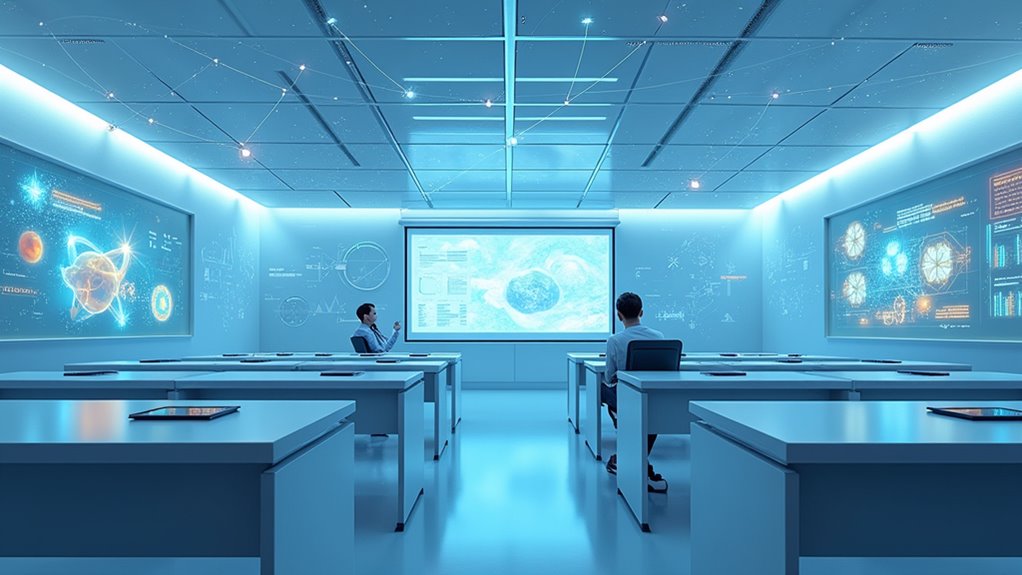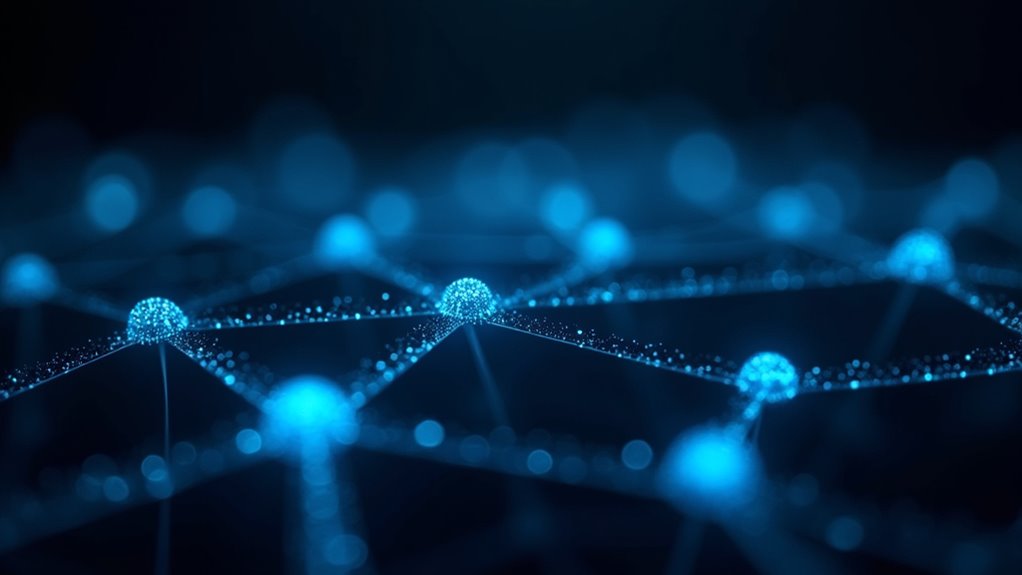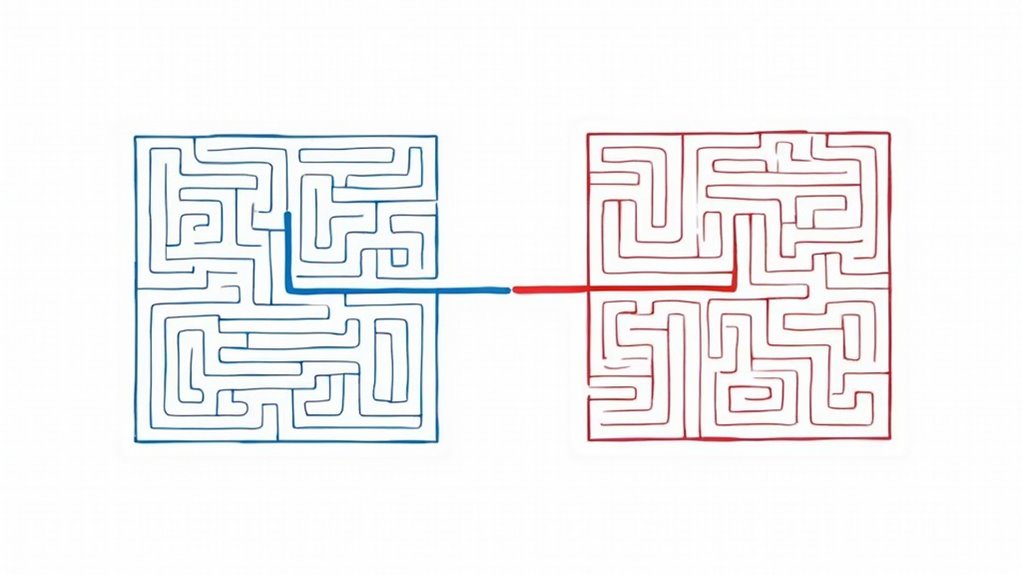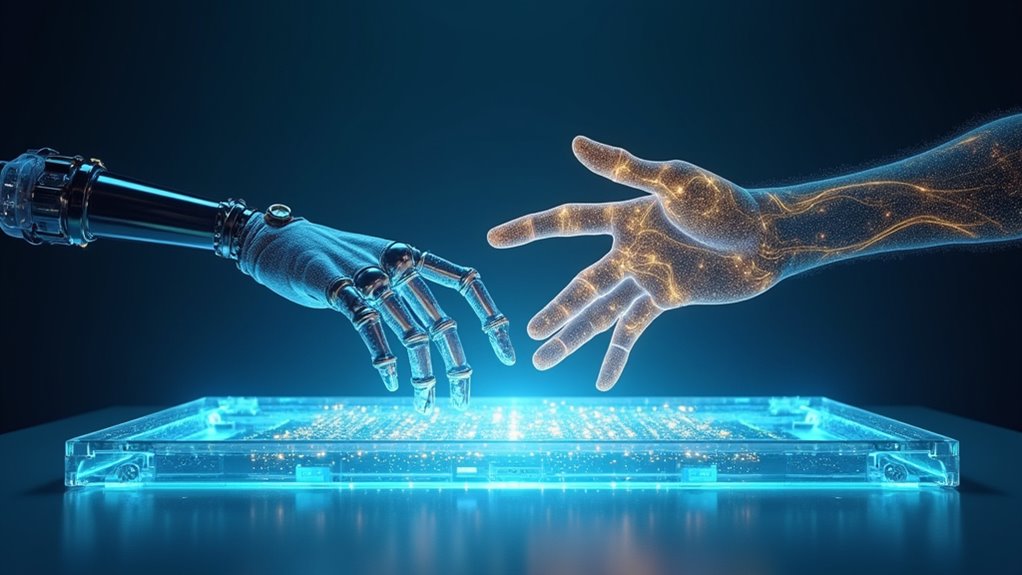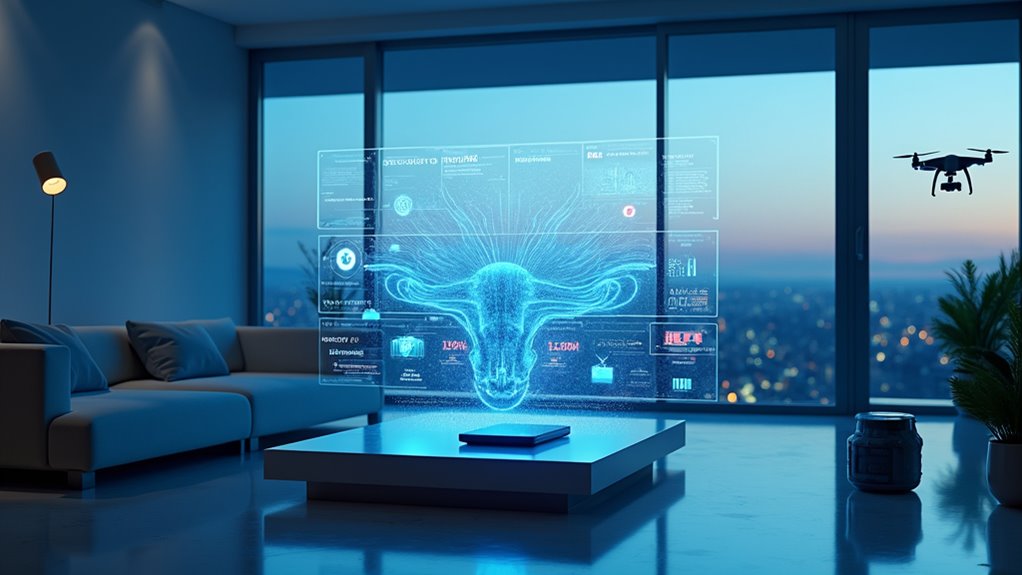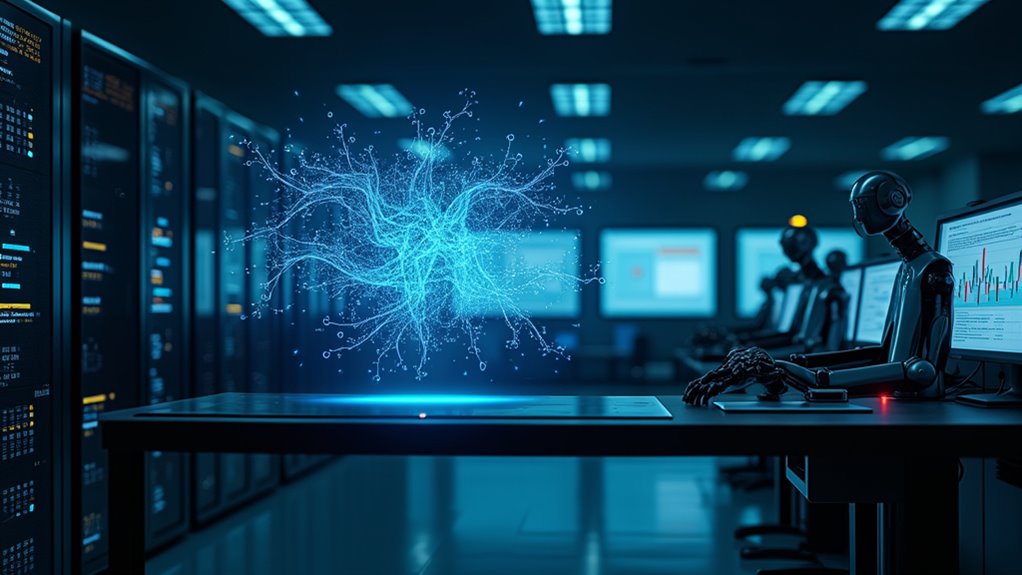AI is radically reshaping education, whether teachers like it or not. Smart systems now handle mundane tasks like grading and lesson planning, freeing up educators to actually teach. Virtual reality brings history to life, while AI tutors provide 24/7 homework help. The technology identifies struggling students early, adapts to different learning styles, and even catches cheaters. Traditional classrooms are evolving into personalized learning hubs – and this transformation is just beginning.
Every classroom in America is getting a high-tech makeover, whether teachers like it or not. Artificial Intelligence isn’t just another trendy buzzword – it’s revolutionizing education from the ground up. Gone are the days when teachers spent countless hours grading papers and creating lesson plans. AI is taking over these mundane tasks, and honestly, it’s about time.
The real game-changer? Personalization. AI doesn’t just teach – it adapts. Like a digital chameleon, it morphs its teaching style to match each student’s needs. Struggling with algebra? The AI notices and adjusts. Visual learner? Here come the graphs and diagrams. It’s like having a personal tutor who never gets tired, never loses patience, and never needs a coffee break. Recent studies show that adaptive learning technologies have significantly improved student performance across all subjects.
Virtual assistants and chatbots are becoming the new after-hours heroes. Students can get help with homework at 3 AM, and these digital helpers don’t mind the late-night questions. Meanwhile, smart software is handling the boring stuff – scheduling classes, sending emails, and generating reports. Similar to diagnostic accuracy in healthcare, these AI systems are reducing administrative errors in education. Administrators are probably doing cartwheels in their offices.
The classroom itself is getting smarter too. Virtual reality is turning boring history lessons into immersive time-travel experiences. AI-powered systems like DreamBox and Carnegie Learning are providing real-time feedback that’s actually useful. And yes, they’re catching cheaters too – those sneaky test-takers don’t stand a chance against AI proctoring systems. Tools like Turnitin detect plagiarism with remarkable accuracy, ensuring academic integrity remains intact.
But here’s where it gets really interesting: AI is crunching numbers faster than a cafeteria full of math teachers. It’s analyzing student performance, predicting who might need extra help, and spotting learning trends that humans might miss. The data never lies, and AI is reading it like an open book.
For students with disabilities, AI tools are breaking down barriers with speech recognition and adaptive technologies. The future of education isn’t just automated – it’s intelligent, adaptive, and weirdly personal. Traditional education is getting a serious upgrade, and there’s no ctrl+z to undo this transformation.
